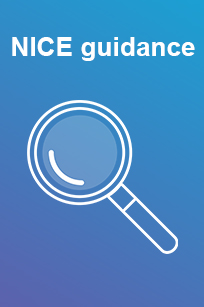NICE focus: easy-to-wear device could help detect arrhythmias
 What’s the guidance?
What’s the guidance?
MTG52: Zio XT for detecting cardiac arrhythmias
Does it replace earlier guidance?
No, Zio ZT is the first assessment, via the Nice digital health technologies guidance development pilot project, to be recommended for NHS use with the caveat that further data must be collected.
What does it cover?
The medical technology guidance recommends the Zio XT service for detecting abnormal heart rhythms, only if NHS organisations collect further evidence of its benefits.
Patients will have access to this promising new technology for three years while more data is collected to address evidence gaps about its benefit. After this time, Nice’s committee will review the technology with the new evidence and make a final recommendation on whether to recommend Zio XT for routine use on the NHS.
The Zio XT service comprises a waterproof biosensor patch and a report with a summary of data that has been analysed using an artificial intelligence (AI) led algorithm. The biosensor patch is a small, lightweight, easy to wear electrocardiogram (ECG), that records and measures the heart's electrical activity. It is worn constantly for up to 14 days and can be fitted by a patient at home, discreetly underneath their clothes.
As the patch can be worn for up to two weeks, the amount of analysable data is larger than the 24-hour Holter monitor that is current NHS standard practice. This means that Zio XT is more likely to pick up arrhythmia. After use the patient removes the patch and sends it via freepost for analysis.
The ECG recordings are analysed using an artificial intelligence developed algorithm, overseen by the company’s cardiographic technicians. A full report is then supplied to the NHS clinician for final analysis and interpretation.
Who is it for?
- Healthcare professionals
- Commissioners and providers of healthcare
- People with suspected cardiac arrhythmias
Who is affected by the condition?
More than 1.2 million people in the UK are diagnosed with having atrial fibrillation (AF), one of the most common cardiac arrhythmias, an abnormality of the heart's rhythm. Another 500,000 people are believed to be living with undiagnosed AF. Zio XT service could – if commissioned by the NHS – be used by more than 150,000 people.
What are the benefits for patients?
This technology can aid the detection of cardiac arrhythmias with continuous monitoring for up to 14 days while allowing the patient to get on with their everyday life. The process can be contact free, especially useful during the Covid-19 pandemic, allowing the patient to first have a telephone/video consultation before the Zio XT biosensor is dispatched direct to their home.
What are the financial implications?
Currently 12 hospital trusts across England are evaluating the Zio XT service, which costs £265 per patient. We expect this guidance to be initially cost incurring due to the cost of the biosensor device used in the Zio XT service. However, this cost may be offset by the capacity benefits expected to arise from a reduction in repeat tests and outpatient attendances. Further downstream benefits are anticipated with a potential reduction in strokes.
More detail can be found in the resource impact tools published alongside the guidance.
Gary Shield is resource impact assessment manager at Nice
Related content
We are excited to bring you a fun packed Eastern Branch Conference in 2025 over three days.
This event is for those that will benefit from an overview of costing in the NHS or those new to costing and will cover why we cost and the processes.